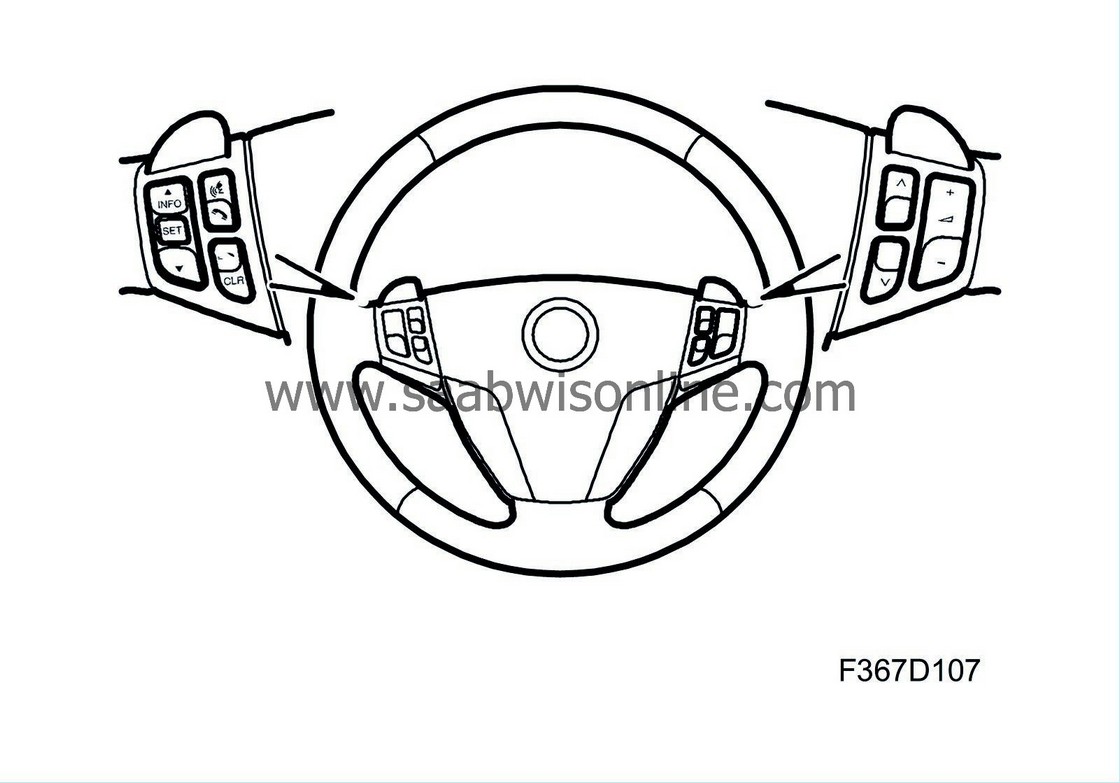Detailed description, audio with navigation
| Detailed description, audio with navigation |
The navigation unit is a combined audio and navigation unit, for more information on the audio unit, see Detailed description of the audio system .

The DVD reader is used for loading the EHU with maps.
The hardware is the same for all markets and is controlled by "end of line programming". If the unit is to be replaced, it must be programmed for the relevant market. Security access from TIS is required to "marry" and "divorce" the audio unit from the car.
| Control |
The head unit's touch screen is used as a control panel and the main window for managing the system's different functions.
The touch screen frame contains control knobs for ON/OFF, volume adjustment, tone adjustment and speaker settings.
There are also control buttons for ejecting CD discs (eject), DVD discs (eject depressed for 10 seconds), navigation, destination, repeating voice instructions, browsing between preset pages for radio stations, selection of audio source, different display and system settings.
The system is started by turning the key in the ignition switch to position 3 and/or pressing the ON/OFF knob once.
- Press the NAV button to follow the car's current position on the map without starting guidance for any route.
- Press the DEST button in order to specify a final destination or a stopping point and create a route.
- Press the RPT button in order to have the last voice instruction repeated.
| Note | ||
|
Normal operation of the audio/navigation system is not covered in the Service Manual. Detailed information regarding its operation is provided in the Owner's Manual for the car. |
Steering wheel controls
The volume can be adjusted and voice control switched on/off via the steering wheel controls.A press on any of the buttons is converted by the column integration module into a bus message which is sent to the navigation unit which then implements the selection in question.

Voice control
Activating/deactivating the voice control can be implemented using the steering wheel control PTT/green handset (PTT=PushToTalk). A symbol is shown in the navigation display when voice control is activated. The microphone is located in the front roof console.The system uses the audio/navigation system's speakers when driving instructions are given.
| Radio receiver, TMC (certain markets) |
Traffic Message Channel, TMC, is a European standard which enables the delivery of traffic information directly to the vehicle.
The radio receiver receives an RF signal and sends traffic information on the bus. The receiver is connected to the antenna cable between the EHU and the antenna amplifier.
The information is presented in the EHU display by means of symbol and text, e.g.:
| • |
No bus communication
|
|
| • |
No TMC information available
|
|
| • |
No event has occurred within 5 km from the car's position
|
|
| • |
Event has occurred within 5 km from the car's position
|
|
| • |
Information on an event regarding which alternative route selection could be advantageous.
|
|
| Satellite radio receiver, XM™ (US/CA) |
A satellite radio receiver is connected to the EHU. For more information, see technical description of Satellite radio reception .
With XM™ there is the option to order a number of radio channels. XM™ is a paid service, see www.xmradio.com or www.xmradio.ca. For activation, see Satellite radio receiver, activating .
| Antenna, AMPS/CDMA, GPS, XM ™ (US/CA) |
When the car is equipped with satellite radio receiver an antenna is required which can receive the XM™ band. This antenna is also used for the phone and telematics services as well as the navigation system.


